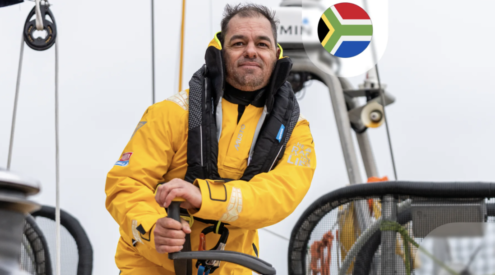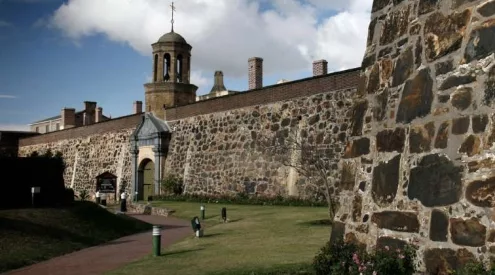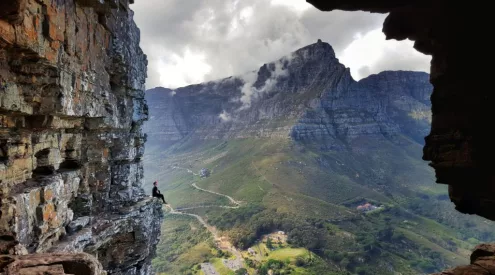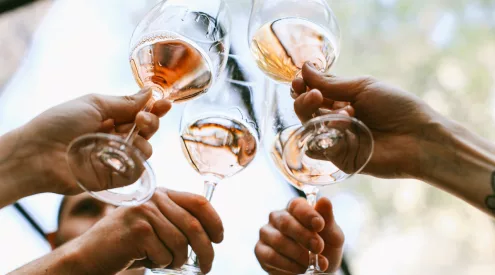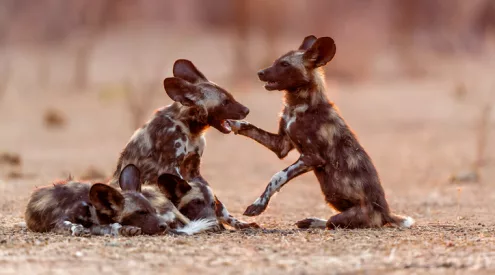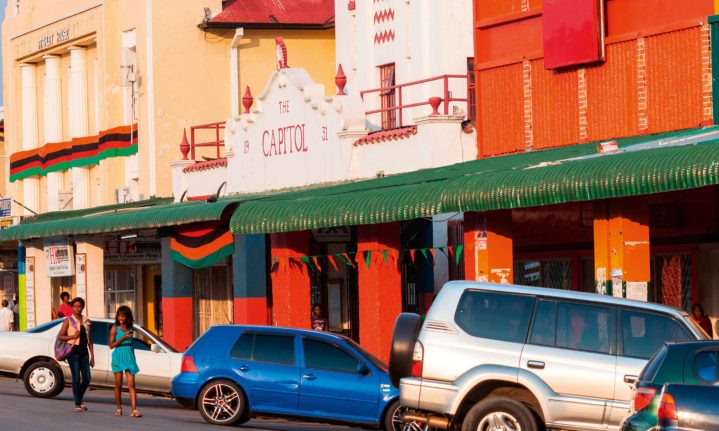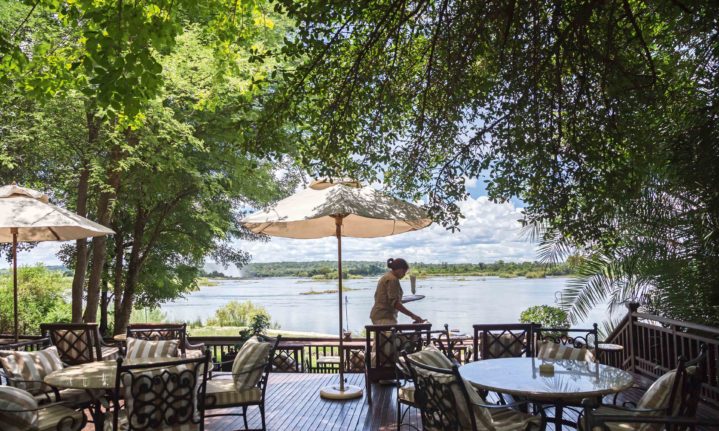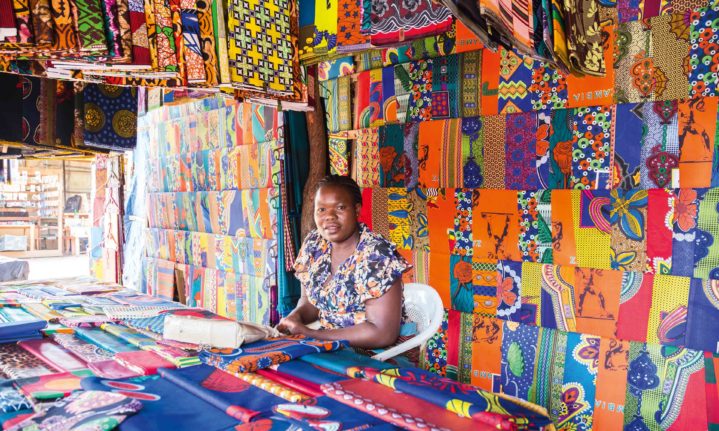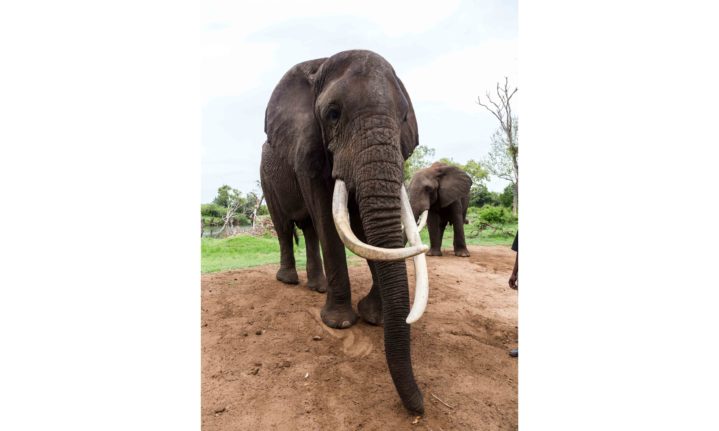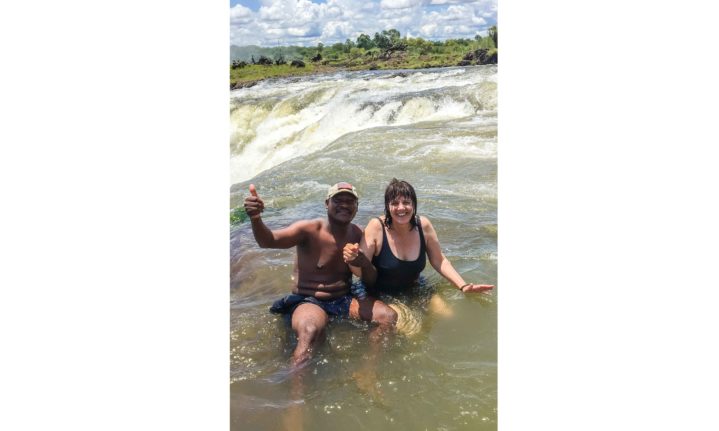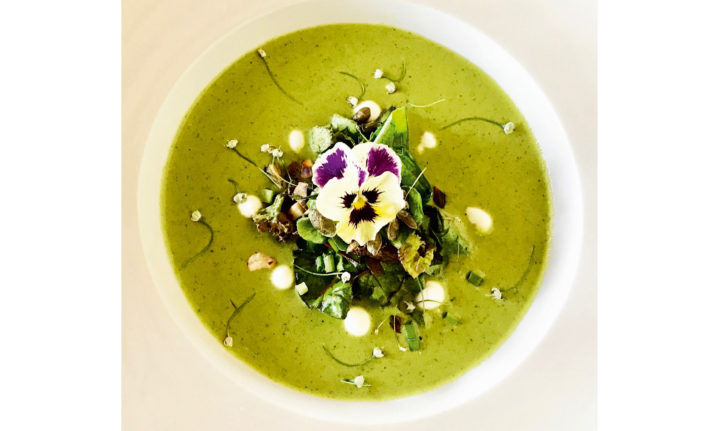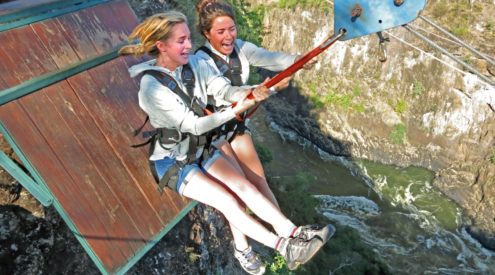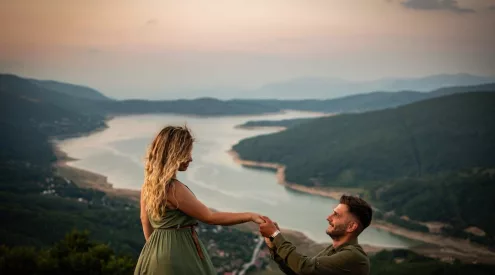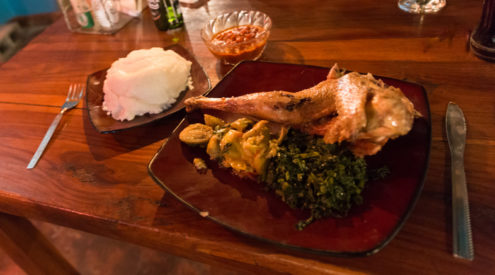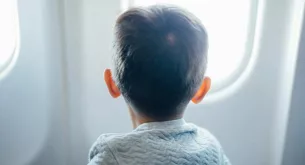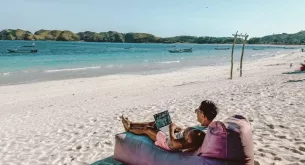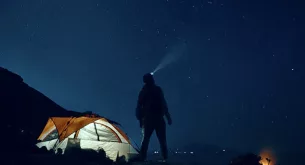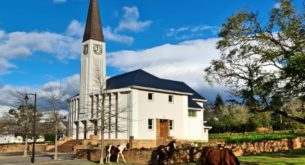Zambians are extremely proud of Livingstone, the country’s border town that sits peacefully on the edge of the Zambezi River near spectacular Victoria Falls. Getaway‘s Michelle Hardie went in search of what makes it tick.

Jollyboys Backpackers is an institution in Livingstone, famous for a chilled-out vibe and colourful interiors. Image credit: Michelle Hardie
It’s such a pleasure that visitors are a priority for Zim/Zam custom officials who have got things so right at the border of both countries. Crossing into Zambia from Zimbabwe was a breeze – all in, it took about 10 minutes. Mcali Mulenga, the driver who collected me at the Zambian gate took my passport to be stamped, while I sat feeling cool in the air-conditioned bus. ‘It’s no problem to move quickly between the countries,’ he continued on his return, ‘and many Zims cross the border for a Friday night – the drinks are cheaper here.’
Drinks are a lifesaver in Livingstone because it gets so damn hot. Three minutes down the road by car from the border you can buy one in a sublime setting at The Royal Livingstone Hotel. I had an hour to kill so Mcali dropped me there, and I made my way across the spongy green lawn to a spot under the trees at The Sundeck restaurant. Overlooking the Zambezi River, I could clearly see the column of spray from Victoria Falls. The low hum of boats going to and from Livingstone Island, the clink of ice and casual conversation put me straight into holiday mode. I could have sat there for my entire trip, but then I wouldn’t have found the real pulse of Livingstone.
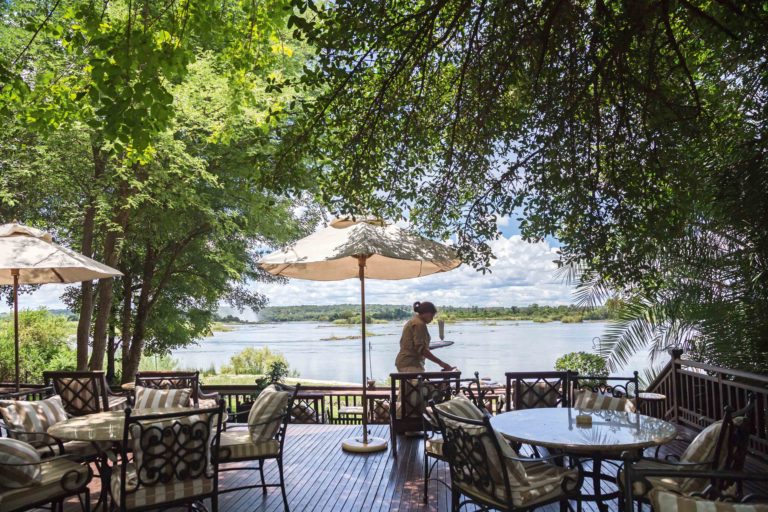
The Sundeck at the Royal Livingstone Hotel. Image credit: Michelle Hardie
Most visitors choose to focus on adventure activities on the river or in the bush and miss out by never venturing into this interesting African town – a little scruffy but well worth exploring. Its spine is the wide main road, Mosi-oa-Tunya, which feeds into a network of smaller ones. Shops, cafes, small businesses and pavement traders line the streets, and an abundance of established trees – mangos, flamboyants, acacias – thrive here.
The history books tell us that Livingstone began as a settlement in the early 20th century benefitting from the 1905 construction of Victoria Falls Bridge. By 1911, it had become the capital of the country then known as Northern Rhodesia but in 1935, Lusaka, further north, was given the title as it was nearer to the riches of the Copperbelt. Relics of the town’s illustrious beginning are evident in many of the beautiful but crumbling buildings. ‘Here’s one of them,’ said Vanessa Nielsen, who’d agreed to show me around for a few days. As we pulled off Mosi-oa-Tunya, The Capitol, built in the 1920s, stood looking at us – its elegant Art-Deco architecture overshadowing the peeling paint. ‘This theatre is one of the oldest buildings in town,’ she explained. ‘Locals enjoyed a pantomime here last Christmas.’
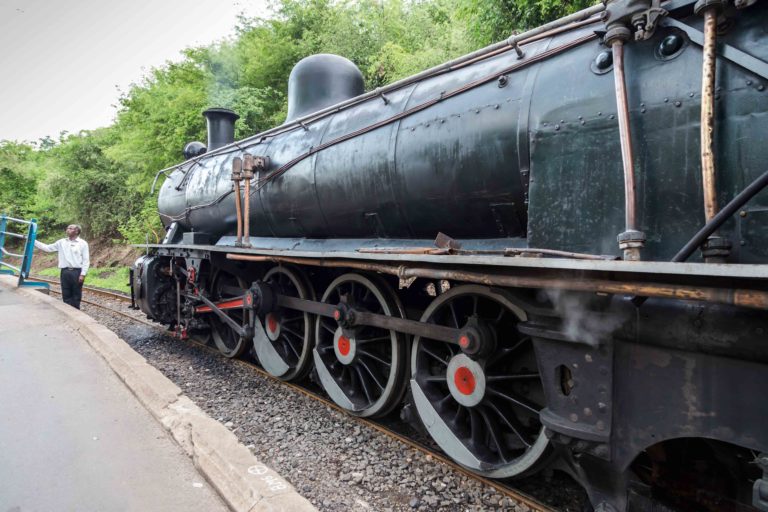
The Royal Livingstone Express stops on Victoria Falls Bridge at sunset. Image credit: Michelle Hardie
I stood a while taking in the street scene. Towering flamboyants firmly rooted in red soil shaded locals having a lunchtime snooze. Rattly old cars moved slowly, sharing the road with newer models and jaywalkers. Women in colourful fabric chatted on the pavements, a shop owner watched from his doorway. The atmosphere was laid back and unhurried. Perhaps it was the midday heat increasing this soporific slowness.
Noticing I was wilting a little, Vanessa said, ‘You have to taste this.’ We were further down the street at Da Canton restaurant where an array of ice cream made by the Italian owner quickly perked me up. Nourished by its cold and creamy sweetness, we jumped back into the car to join the traffic, passing the now-defunct North Western Hotel, which ran the first multi-racial bar in town in 1961 at the bottom of Zambezi and Chimwemwe Way.
‘I’m taking you to Dambwa Central Market,’ said Vanessa, as we drove a few blocks down Kuta Way, passing a trolley piled with fat yellow bananas. ‘We’re driving through Second Class where you can get anything,’ she said, waving her hand to the right. Designated as the ‘second-class trading area’ for Africans and Indians in the 1900s, and still referred to by the same name, locals come here for the fruit and veggie markets, wholesale plaza stores, restaurants, hair salons, cobblers and to catch a bus.
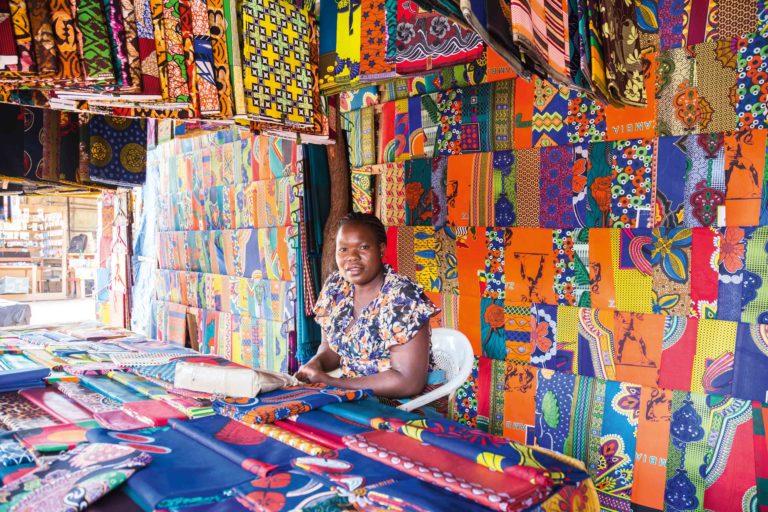
Barbara Sinyangwe in her chitenge shop at Dambwa Central Market. Image credit: Michelle Hardie
Dambwa Central Market immerses you in local food, culture and fashion. Everything from dried fish and live chickens to fresh greens and dried pulses are on sale, as well as carvings and clothes. Stalls lined with colourful material caught my eye – the same cheerful patterns that I had seen women wearing in the centre of town. ‘This fabric is made locally and it’s called chitenge,’ smiled Vanessa, as she folded back a length to reveal several more.
It was hard not to notice the pride that women wearing chitenge dresses displayed in Livingstone. The designs and colours have rich cultural symbolism and promote national identity, epitomising the Zambian spirit of harmony among its 73 ethnic groups. It’s not surprising that the country has been ranked as one of the most peaceful in Africa. I was reminded of my tail-end conversation with Mcali. ‘Zambia is the real Africa. We are very much united,’ he had said.

The Capitol theatre on Mosi-oa-Tunya Road in Livingstone. Image: Supplied
This was evident at the museum, which is the oldest and largest in Zambia. I was intrigued by exhibits like ‘Our Village’ – its concept is a national heritage that has survived modern and cultural pressures. And the displays of people depicting town life were so real I almost jumped out of my skin at one point! They were quirky, handmade and far more imaginative than many museum exhibits I’ve seen elsewhere. A whole section is also devoted to David Livingstone.
Even passing through a police checkpoint, a continual feature of the landscape, seemed to be a peaceful procedure. And we slowed right down to a virtual stop when we saw a funeral taking place in a field quite far off the road. ‘All Zambians do this as a sign of respect. Politeness is important here.’ said Vanessa.
Plan your trip
There are direct flights to Livingstone from Joburg, Cape Town and Nelspruit, from R3700 return (travelstart.co.za). I crossed the border from Zimbabwe at Victoria Falls. Livingstone CBD is a 15-minute drive from the border.
Need to know
South Africans do not require a visa to visit Zambia. Livingstone is an elephant corridor – self-drive visitors should be on the look-out for elephants on the road all year round. Bushtracks Africa has a Victoria Falls activities app which is an instant-booking system. bushtracksafrica.com
Stay here
The David Livingstone Safari Lodge & Spa is 7km from the CBD, and right on the edge of the Zambezi. All rooms have balconies which overlook the river. From R2400 per person sharing B&B. safpar.com/lodges
Victoria Falls Waterfront, next to The David Livingstone Safari Lodge & Spa, has chalets, permanent tents and a campsite. White-water rafting, canoe safaris, speed-boat adventures, river cruises, safari drives and cultural tours start and finish here. From R420 per person sharing B&B. safpar.com/lodges
Jollyboys Backpackers is in the heart of the CBD and has won awards for best value. Colourful and clean, and for those on a real budget. From R200 per person. backpackzambia.com
Do this
See Victoria Falls in a Batoka Sky microlight. It’s utterly thrilling to be in an open flying machine above the Falls. Pricey but worth it. From R2500 per person for 15 minutes. seasonsinafrica.com
Swim in Devil’s Pool on the edge of the Falls. It’s a natural pool just off Livingstone Island. Open from mid-August to mid-January. The pool can only be visited with guides from Tongabezi Lodge. From R1450 per person. devilspool.net
Take a train trip. The Royal Livingstone Express is a steam train that chugs from the town to Victoria Falls Bridge and back. The interior and exterior are beautifully maintained harking back to the luxury travel of a bygone era. R2679 per person includes drinks, a talk and a five-course dinner. anantara.com
Visit Livingstone Museum on Mosi-oa-Tunya Road. Take your time here. The cultural heritage exhibits are absorbing and it houses memorabilia from David Livingstone, whose original letters are also available for reading. Entry is R11 per person.
Visit The Elephant Café. Meet rescued elephants that have lived there for a long time, then enjoy high tea, lunch or dinner at the award-winning restaurant. From R1925 per person. Arrive by jet boat or road. Booking is essential as the restaurant only seats 24 people. safpar.com/the-elephant-cafe
Eat here
Café Zambezi is bursting with local delicacies such as goat curry and mopane worms. On Mosi-oa-Tunya Road, you’ll sit under the mango trees and enjoy the tourist-friendly vibe.
Kubu Café is where locals hang out for coffee and a catch up. It’s also on Mosi-oa-Tunya Road.
SavannaBel is a must for foodies. Bush-gourmet connoisseur Annabel Hughes Aston, whose food put The Elephant Café on the world map, offers a dining experience at her home on Livingstone Fruit Farm. She uses wild ingredients gathered from the bush, organic produce grown in her own garden and locally produced meat, fish and dairy. It’s a simple, sublime setting in a teak forest well worth the 25km trip out of town. Optional garden/farm/foraging tours, cooking classes/demos, market/village visits. From R1500 per person. +260962079975, annabelhughesaston.com
Shop Here
Wayawaya sells beautiful, quality leather goods made by local Zambian women. Find it in the yellow building on Mosi-oa-Tunya opposite Protea Hotel.
Mukuni Park Curio Market is on Mwela Street. This is souvenir city – the place to buy gifts to take home and barter with locals.
Don’t miss this!
Zambezi Whitewater Festival 24–26 October, safpar.com

